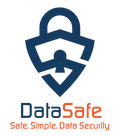When it comes to keeping your business and personal data safe, it is essential to have a security risk management plan in place. The projected global expenditure on security and risk management is expected to experience an 11.3% growth rate in 2023. Establishing the best practices for security risk management can help protect your data from malicious activities and cyber threats.
Read on to learn the top security risk management habits that businesses should adopt to ensure their data is secure. From identifying and assessing risks to implementing security controls, these habits can help you protect and keep your data safe.
Security Risk Management Habits to Ensure Data Protection
Planning and Preparation
One of the top security risk management habits to adopt is planning and preparation. It’s essential to have a plan in place that outlines potential risks, along with strategies for addressing them. This means conducting a thorough risk assessment, identifying potential vulnerabilities and threats, and putting together a comprehensive plan for addressing these issues.
Having a solid plan ensures that everyone in the organization is on the same page regarding security risks and helps prevent issues from arising in the first place. In addition, having a well-thought-out plan can also help to minimize the impact of a security incident in the event that it does happen.
It’s essential to remember that planning and preparation isn’t a one-time event. It’s an ongoing process that needs to be revisited and updated regularly. As new risks emerge or the organization’s needs change, the security plan must be adjusted accordingly. Organizations can stay one step ahead of potential security threats by making planning and preparation an ongoing priority.
Training and Awareness
One of the top security risk management habits to adopt is a focus on training and awareness. A robust training program ensures that employees are aware of potential security risks and understand how to handle sensitive information securely.
Statistics indicate that a significant 95% of instances of “data leakage” can be attributed to human error, underscoring the importance of educating employees about sound security practices. Employee training should cover topics such as password management, data handling procedures, and phishing prevention. It’s also important to include training on emerging threats like ransomware and social engineering attacks. In addition to formal training sessions, regular reminders, and updates can help keep security awareness in mind. This might include email reminders, posters around the office, or security-focused newsletters.
Another effective strategy is to create a “security champion” program, where selected employees receive additional training and act as advocates for security best practices within their teams. This can help prioritize security across the organization, not just within IT or security departments.
Ultimately, building a culture of security awareness is an ongoing process. By investing in regular training and awareness initiatives, organizations can better protect themselves from various security threats.
Implementation and Monitoring
Once the security plan has been established and employees have been trained, it’s time to implement that plan.
Effective implementation means putting all of the planning and preparation into action. This may involve installing security software, creating access controls, or updating password policies. Whatever the plan, all necessary steps must be taken to fully implement the plan.
In addition to implementing the plan, monitoring is equally important. Monitoring means keeping an eye on the security system and checking for any weaknesses or vulnerabilities. This may involve monitoring logs, tracking user activity, and regularly conducting security assessments to ensure the plan works effectively.
Regular monitoring can also help to identify new risks that may emerge. New threats may emerge as technology changes or as new employees are onboarded. By closely monitoring the system and regularly assessing the risk, you can quickly identify any new vulnerabilities and take steps to address them.
By implementing a solid security plan and regularly monitoring for potential risks, you can significantly reduce the risk of a security breach. Taking these steps can help protect your organization’s assets and ensure you comply with industry standards and regulations.
Testing and Audits
Audits help you identify any potential weaknesses and vulnerabilities that cybercriminals could exploit.
Regularly testing your security systems is crucial for keeping your organization safe. You can conduct simulated cyber attacks to see how your systems perform in real-life situations. This allows you to identify any areas that need improvement before a real attack occurs.
Auditing your security systems is also essential for identifying any issues and gaps in your security strategy. Reviewing logs and reports, you can track all user activity and system events to detect unauthorized access attempts.
Regular testing and audits can ensure that your security systems are operating effectively and your organization is protected from potential security breaches. Make sure to schedule these assessments regularly, as cyber threats constantly evolve, and your security systems need to keep up.
Review and Improvement
The final step in establishing top security risk management habits is regularly reviewing and improving your existing protocols. This will ensure that your security measures remain effective and up-to-date in the face of evolving threats. Reviewing your security systems and processes can help identify any vulnerabilities or gaps that may have been missed during implementation or monitoring.
During the review phase, it is essential to evaluate the effectiveness of your existing security measures and make any necessary improvements. This can include revising policies and procedures, introducing new security technologies, and providing additional employee training and education. It is important to stay informed of emerging threats and technologies affecting your security posture and adjust your strategy accordingly.
Continuous improvement is critical to maintaining strong security practices. Regular testing and auditing ensure that your security protocols remain effective and relevant. It is important to regularly assess and update your risk management practices to address any new or emerging threats.
By leveraging advanced security tools and implementing an incident response plan, companies can minimize the damage caused by potential breaches and swiftly remediate any security incidents.
Data Safe Group LLC helps businesses stay safe by protecting their data. Our experts can help you develop a data-security strategy that can help safeguard your personal information. Contact us today to schedule a consultation, or call us at (973)814-9968.


